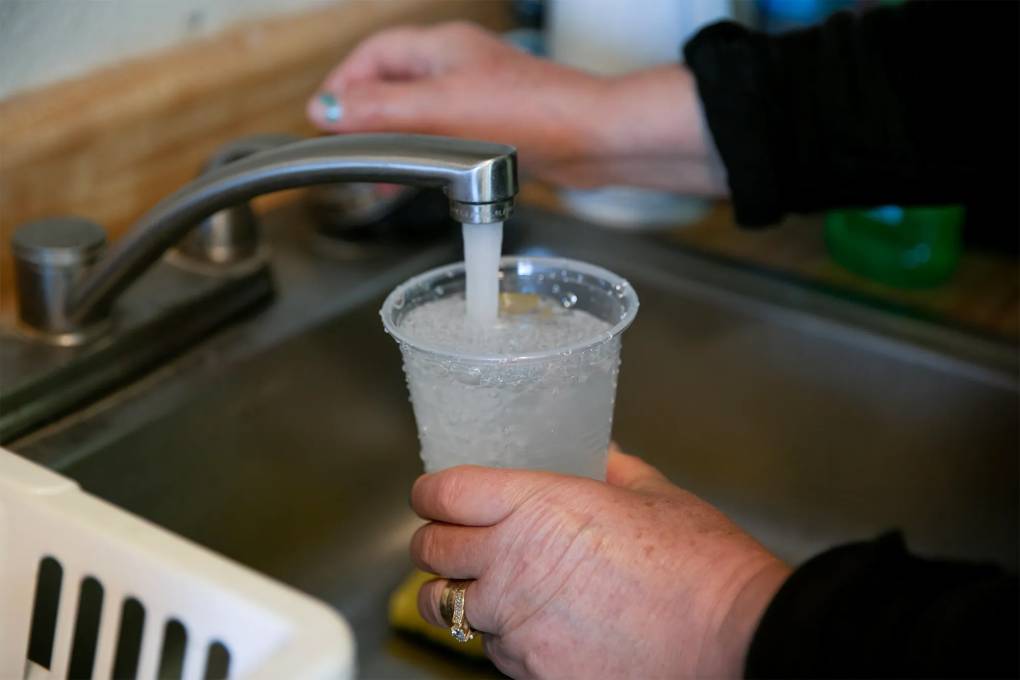Nearly 1 Million Californians Have No Access to Safe Drinking Water, With Communities of Color Most at Risk | KQED


Sustainable Development Goals (SDGs) and Failing Water Systems in California

Introduction
As of Jan. 1, about 913,000 people were served by water systems that didn’t meet the requirements, dropping to about 771,000 as of today. Even more Californians, around 1.54 million, got their drinking water from hundreds of water systems considered at risk of failing, the report said—and it rose to more than 1.8 million as of today. Nearly 144,000 wells were threatened by encroaching contaminants and shortages.
Failing Water Systems in California
Failing water systems span the state— from tiny Del Norte County on the Oregon state line to San Diego and Imperial counties near the border with Mexico. They cluster densely in the Central Valley and along the Central Coast, where groundwater overuse, agricultural chemicals, and smaller, struggling water systems collide — particularly in lower-income communities of color.
Sustainable Development Goals (SDGs)
It’s a moral outrage. It’s unconscionable in a state that has so many resources that we can’t ensure that everybody has access to the human right to water,” said Kyle Jones, policy and legal director with the Community Water Center. “Folks shouldn’t have to suffer health impacts or added cost to have access to something that most of us take for granted and can get daily.”
The price tag for ensuring safe, affordable and accessible water supplies for all Californians is staggering — an estimated $16 billion over the next five years — as the state grapples with a multibillion-dollar deficit.
Without more state or federal funding, most of the total — around $13.9 billion — may fall on local communities and well owners, according to the report. That means some of the people least able to afford it will end up paying more for water.
Challenges and Future Outlook
The number of failing systems — and the cost of fixing them — is likely to climb as water suppliers must meet new state and federal standards for hexavalent chromium, the contaminant made infamous by the movie Erin Brockovich, as well as pervasive forever chemicals.
“The subtext of this report is pretty clear,” said Greg Pierce, director of UCLA’s Human Right to Water Solutions Lab, who commended the water board’s transparency and extensive analysis. “The state just needs to put its money where its mouth is.”
It’s been 12 years since California became the first state in the country to recognize clean, safe, affordable and accessible drinking water as a human right. Today, about 98% of Californians are served by water systems that meet state standards.
Yet despite California’s reputation as an economic powerhouse and climate leader, the state has long struggled to ensure safe drinking water for all — especially those in rural, disadvantaged communities. Californians relying on household wells, for instance, are beyond the state’s regulatory reach.
Safe and Affordable Funding for Equity and Resilience (SAFER) Program
The annual assessment comes from the water board’s Safe and Affordable Funding for Equity and Resilience (SAFER) drinking water program, established by state law in 2019. Nearly a billion dollars has been spent on grants in disadvantaged communities.
The list of failing water systems typically hovers between 380 and 400, state officials said. And nearly every year, with only a couple of exceptions, more water systems have been added to the “failing” list than removed.
Still, about 283 — or 42% of 715 systems on the list — came off between 2017 through 2023. About 700,000 more people have safe water than in 2019, according to the water board.
Conclusion
The pace of ensuring safe drinking water is too slow, the state auditor said in a report lambasting the water board two years ago. It “has funding available to help these failing systems improve the quality of their drinking water. Nonetheless, the board has generally demonstrated a lack of urgency in providing this critical assistance,” the auditor said.
Kristyn Abhold, a senior environmental scientist at the water board who led Tuesday’s report, said infrastructure takes time. “It’s not just the funding side, but it’s the planning. It’s the engineering reports, the community engagement, it’s getting the right permits in place,” she said.
The cost estimates have risen about $1.1 billion, or about 26%, since a 2021 assessment for failing and at-risk public water systems, and $3.6 billion for high-risk private, household wells and small water systems that serve only a handful of customers — a 264% increase, said Jackie Carpenter, a water board spokesperson.
Part of the increase is due to inflation, Abhold said. Some is because the latest analysis favors long-term, higher-cost fixes, such as merging struggling water systems with more secure ones nearby. Some is because the analysis now includes water systems and household wells at risk for shortages, rather than just ones grappling with poor water quality.
SDGs, Targets, and Indicators
1. Which SDGs are addressed or connected to the issues highlighted in the article?
- SDG 6: Clean Water and Sanitation
- SDG 10: Reduced Inequalities
- SDG 11: Sustainable Cities and Communities
2. What specific targets under those SDGs can be identified based on the article’s content?
- SDG 6.1: By 2030, achieve universal and equitable access to safe and affordable drinking water for all.
- SDG 6.3: By 2030, improve water quality by reducing pollution, eliminating dumping and minimizing release of hazardous chemicals and materials, halving the proportion of untreated wastewater, and increasing recycling and safe reuse globally.
- SDG 10.2: By 2030, empower and promote the social, economic, and political inclusion of all, irrespective of age, sex, disability, race, ethnicity, origin, religion, or economic or other status.
- SDG 11.1: By 2030, ensure access for all to adequate, safe, and affordable housing and basic services and upgrade slums.
3. Are there any indicators mentioned or implied in the article that can be used to measure progress towards the identified targets?
- Number of people served by water systems that meet requirements
- Number of people getting drinking water from water systems considered at risk of failing
- Number of wells threatened by encroaching contaminants and shortages
- Number of failing water systems
- Amount of funding allocated for safe and affordable water supplies
Table: SDGs, Targets, and Indicators
| SDGs | Targets | Indicators |
|---|---|---|
| SDG 6: Clean Water and Sanitation | 6.1: By 2030, achieve universal and equitable access to safe and affordable drinking water for all. | – Number of people served by water systems that meet requirements – Number of people getting drinking water from water systems considered at risk of failing – Number of wells threatened by encroaching contaminants and shortages |
| SDG 6: Clean Water and Sanitation | 6.3: By 2030, improve water quality by reducing pollution, eliminating dumping and minimizing release of hazardous chemicals and materials, halving the proportion of untreated wastewater, and increasing recycling and safe reuse globally. | – Number of failing water systems – Amount of funding allocated for safe and affordable water supplies |
| SDG 10: Reduced Inequalities | 10.2: By 2030, empower and promote the social, economic, and political inclusion of all, irrespective of age, sex, disability, race, ethnicity, origin, religion, or economic or other status. | – Number of failing water systems in lower-income communities of color |
| SDG 11: Sustainable Cities and Communities | 11.1: By 2030, ensure access for all to adequate, safe, and affordable housing and basic services and upgrade slums. | – Number of failing water systems in rural, disadvantaged communities – Number of people relying on household wells beyond the state’s regulatory reach |
Source: kqed.org








